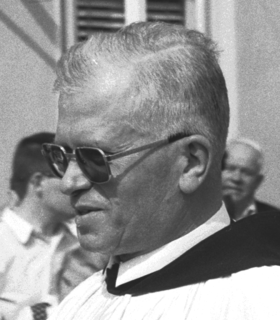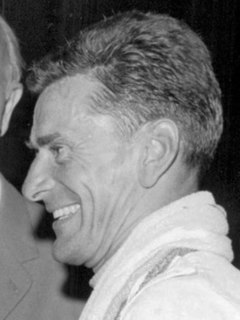 W
WMaximilian de Angelis was a general in the Wehrmacht of Nazi Germany during World War II. He was a recipient of the Knight's Cross of the Iron Cross with Oak Leaves.
 W
WHans Carl Artmann, also known as Ib Hansen, was an Austrian-born poet and writer, most popular for his early poems written in Viennese, which however, never after were to be the focus of his oeuvre.
 W
WFranz Friedrich Böhme was an Austrian general in the Wehrmacht during World War II, serving as Commander of the XVIII Mountain Corps, Hitler's Plenipotentiary Commanding General in the Balkans, and commander-in-chief in German-occupied Norway during World War II. Böhme was arrested for trial by a US Army Tribunal in Nuremberg in the Hostages Trial on a charge of having massacred thousands of Serbian civilians. He committed suicide in prison.
 W
WFranz Carl Heimito, Ritter von Doderer; known as Heimito von Doderer was an Austrian writer. He was nominated for the Nobel Prize in Literature five times.
 W
WPaul Karl Feyerabend was an Austrian-born philosopher of science best known for his work as a professor of philosophy at the University of California, Berkeley, where he worked for three decades (1958–1989). At various points in his life, he lived in England, the United States, New Zealand, Italy, Germany, and finally Switzerland. His major works include Against Method (1975), Science in a Free Society (1978) and Farewell to Reason (1987). Feyerabend became famous for his purportedly anarchistic view of science and his rejection of the existence of universal methodological rules. He was an influential figure in the sociology of scientific knowledge. Asteroid (22356) Feyerabend is named in his honour.
 W
WFerdinand Foltin was an Austrian officer in the paratroop forces (Fallschirmjäger) of Nazi Germany during World War II and a general in the post-war Austrian Armed Forces. He was a recipient of the Knight's Cross of the Iron Cross.
 W
WEdmund Glaise-Horstenau was an Austrian Nazi politician who became the last Vice-Chancellor of Austria, appointed by Chancellor Kurt Schuschnigg under pressure from Adolf Hitler, shortly before the 1938 Anschluss.
 W
WGordon Gollob was an Austrian fighter pilot during World War II. A fighter ace, he was credited with 150 enemy aircraft shot down in over 340 combat missions. Gollob claimed the majority of his victories over the Eastern Front, and six over the Western Front.
 W
WKarl Gratz was an Austrian-born Luftwaffe fighter pilot during World War II. As a fighter ace, he was credited with 138 aerial victories claimed in more than 900 missions. Gratz claimed the majority of his victories over the Eastern Front, and 17 over the Western Front.
 W
WKarl Gröger was a member of a Dutch resistance group executed in 1943.
 W
WHans Hermann Wilhelm Groër OSB was an Austrian Cardinal of the Roman Catholic Church. He served as Archbishop of Vienna from 1986 to 1995, and became a cardinal in 1988. Pope John Paul II replaced him as archbishop after multiple allegations of sexual abuse of children, and at John Paul's request Groër relinquished all ecclesiastical duties and privileges as an archbishop and cardinal on 14 April 1998.
 W
WMatthäus Hetzenauer was an Austrian sniper in the Wehrmacht of Nazi Germany during World War II. He served in the 3rd Mountain Division on the Eastern Front of World War II, and was credited with 345 kills. His longest confirmed kill was reported at 1,100 meters. Hetzenauer received the Knight's Cross of the Iron Cross on 17 April 1945.
 W
WAdolf Hoch was an Austrian architect. He was born in Winterberg, Austrian-Hungarian Empire.
 W
WWolf von In der Maur auf Strelberg und zu Freifeld, also known as Wolf In der Mauer or Wolf Indermaur, was an Austrian journalist, television director and news editor.
 W
WCurt von Jesser was an Austrian general in the Wehrmacht of Nazi Germany during World War II. He was a recipient of the Knight's Cross of the Iron Cross.
 W
WKarl Kahr was an Austrian SS-Hauptsturmführer and physician. During World War II, he was Chief Medical Officer of the Mittelbau-Dora concentration camp between January 1944 and February 1945.
 W
WGeneralmajor Erwin Heinrich René Lahousen, Edler von Vivremont was a high-ranking Abwehr official during the Second World War, as well as a member of the German Resistance and a key player in attempts to assassinate Adolf Hitler on 13 March 1943 and 20 July 1944.
 W
WPeter Lichtner-Hoyer was an Austrian sportsman and colonel.
 W
WAlexander Löhr was an Austrian Air Force commander during the 1930s and, after the annexation of Austria, he was a Luftwaffe commander. Löhr served in the Luftwaffe during World War II, rising to commander of Army Group E and then to commander-in-chief in Southeastern Europe.
 W
WKonrad Zacharias Lorenz was an Austrian zoologist, ethologist, and ornithologist. He shared the 1973 Nobel Prize in Physiology or Medicine with Nikolaas Tinbergen and Karl von Frisch. He is often regarded as one of the founders of modern ethology, the study of animal behavior. He developed an approach that began with an earlier generation, including his teacher Oskar Heinroth.
 W
WKarl Prusik (1896–1961) was an Austrian mountaineer. Prusik served twice as President of the Austrian Alpine Club (AAC) and is credited with establishing over 70 ascents and routes. He is also recognised as the inventor of the Prusik knot.
 W
WErhard Raus was a general in the Wehrmacht of Nazi Germany during World War II. He commanded the 6th Panzer Division during the early years of the war on the Eastern Front before taking army and army group commands. Raus was one of three former Austrians who rose to the rank of Generaloberst within the German Wehrmacht. The other two were Alexander Löhr and Lothar Rendulic.
 W
WJulius 'Papa' Ringel was an Austrian general in the armed forces of Nazi Germany during World War II. He fought in the Western and Eastern fronts, as well as the Balkan Campaign. Ringel commanded the 3rd Mountain Division, 5th Mountain Division, LXIX Corps, Wehrkreis XI and the Army Corps Ringel. He was a recipient of the Knight's Cross of the Iron Cross with Oak Leaves.
 W
WOtto Schimek was an Austrian soldier in the German Wehrmacht during World War II who served as a member of a firing squad. He was himself executed, allegedly for refusing to carry out a death sentence on Poles, making him a symbol of pacifism and Austrian resistance to Nazism. The truthfulness of the story has been disputed, with critics arguing that the story is not based on any reliable documents and is a fabrication.
 W
WAnton Schmid was an Austrian recruit in the Wehrmacht who saved Jews during the Holocaust in Lithuania. A devout but apolitical Roman Catholic and an electrician by profession, Schmid was conscripted into the Austro-Hungarian Army during World War I and later into the Wehrmacht during World War II. Put in charge of an office to return stranded German soldiers to their units in late August 1941, he began to help Jews after being approached by two pleading for his intercession. Schmid hid Jews in his apartment, obtained work permits to save Jews from the Ponary massacre, transferred Jews in Wehrmacht trucks to safer locations, and aided the Vilna Ghetto underground. It is estimated that he saved as many as 300 Jews before his arrest in January 1942. He was executed on 13 April.
 W
WGustav Schwarzenegger was an Austrian police chief, postal inspector, Nazi Brownshirt, and a military police officer. He was the father of Arnold Schwarzenegger.
 W
WOtto Johann Anton Skorzeny was an Austrian-born German SS-Obersturmbannführer in the Waffen-SS during World War II. During the war, he was involved in several operations, including the removal from power of Hungarian Regent Miklós Horthy and the Gran Sasso raid which rescued Benito Mussolini from captivity. Skorzeny led Operation Greif in which German soldiers infiltrated Allied lines by using their opponents' uniforms, equipment, language and customs. He was charged for that at the Dachau Military Tribunal with breaching the 1907 Hague Convention, but was acquitted after a former British SOE agent F. F. E. Yeo-Thomas testified that he and his operatives had worn German uniforms behind enemy lines.
 W
WMirko Szewczuk, was born Volodymyr Szewczuk was a German cartoonist of Austrian-Ukrainian origin.
 W
WKurt Josef Waldheim was an Austrian politician and diplomat. Waldheim was the fourth Secretary-General of the United Nations from 1972 to 1981, and President of Austria from 1986 to 1992. While he was running for the latter office in the 1986 election, the revelation of his service in Greece and Yugoslavia, as an intelligence officer in Nazi Germany's Wehrmacht during World War II, raised international controversy.
 W
WOskar Werner was an Austrian stage and cinema actor whose prominent roles include two 1965 films, The Spy Who Came in from the Cold and Ship of Fools. Other notable films include Decision Before Dawn (1951), Jules and Jim (1962), Fahrenheit 451 (1966), The Shoes of the Fisherman (1968) and Voyage of the Damned (1976).
 W
WMauritz von Wiktorin was an Austrian general in the Wehrmacht during World War II. He was a recipient of the Knight's Cross of the Iron Cross of Nazi Germany. Wiktorin was discharged from the army on 30 November 1944 after the 20 July Plot.
 W
WHeinz Zemanek was an Austrian computer pioneer who led the development, from 1954 to 1958, of one of the first complete transistorised computers on the European continent. The computer was nicknamed Mailüfterl — German for "May breeze" — in reference to Whirlwind, a computer developed at MIT between 1945 and 1951.